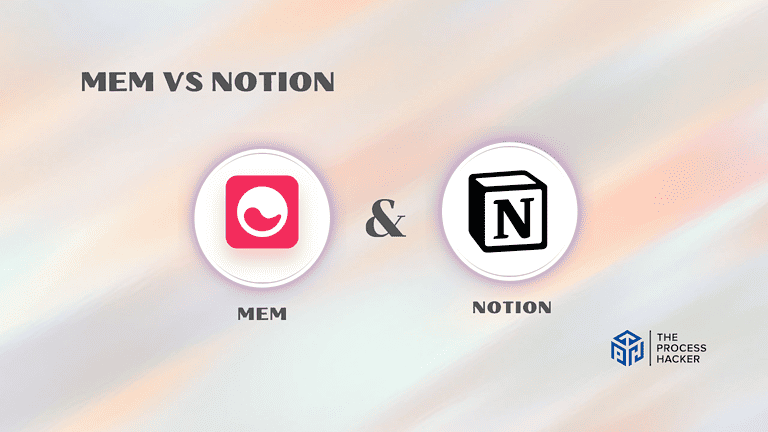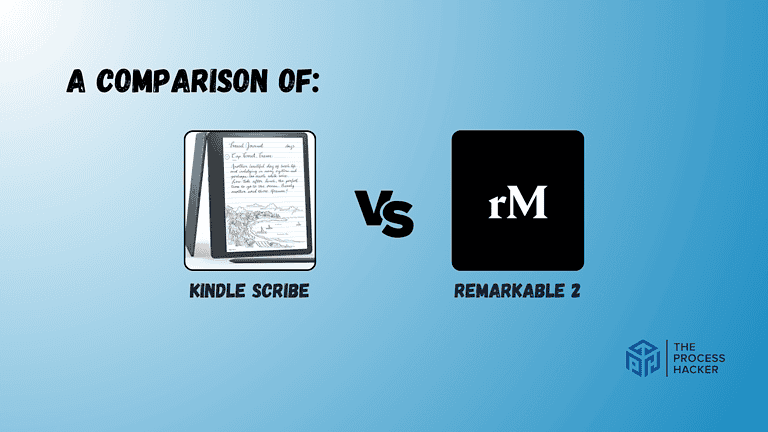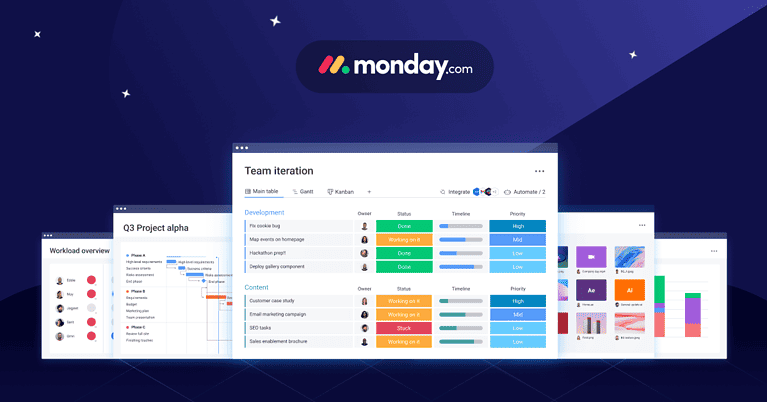How to Master Daily Planning Even if You’re Chronically Disorganized
Ever feel like your days are a chaotic whirlwind of forgotten appointments, missed deadlines, and half-finished tasks?
If so, you’re not alone. Millions of people struggle with chronic disorganization, which can seriously affect productivity, stress levels, and overall well-being. But here’s the good news: even the most disorganized among us can learn to master daily planning and take control of their life.
In this comprehensive guide, we’ll share proven strategies and practical tips to help you transform your chaotic days into organized, productive ones. We’ll dive deep into the psychology of disorganization, explore the benefits of effective planning, and provide step-by-step instructions to build a planning system that works for you.
Whether you’re a student, a professional, a stay-at-home parent, or simply someone who wants to get more done, this guide is for you. With the power of daily planning, you can reclaim your time, reduce your stress, and achieve your goals.
What is Daily Planning?
Daily planning is the art of structuring your day before it unfolds. It involves organizing tasks, scheduling key activities, and setting achievable goals within a 24-hour period. This method is vital in your time management tools, helping you zero in on what’s crucial and maximize your productivity.
By adopting daily planning, you pave the way for a more focused and effective routine that not only keeps your tasks on track but also boosts your overall efficiency. Whether you’re tackling a project at work, studying for exams, or planning personal activities, incorporating this strategy ensures that you make the best use of your time every day.
Why You Need to Master Daily Planning
Daily planning isn’t just a helpful tool; it’s a game-changer for anyone seeking to improve their productivity and manage their time effectively. Let’s delve into why mastering this skill is essential:
1) Increases Focus and Productivity
When you start your day with a clear plan, you immediately know what needs to be done, eliminating the mental clutter of trying to remember everything. This laser-sharp focus lets you dive straight into your tasks without wasting precious time figuring out where to begin.
With a well-structured plan, you can easily track your progress and maintain momentum throughout the day, leading to increased efficiency and accomplishment.
2) Reduces Stress and Overwhelm
A common struggle is feeling overwhelmed by a never-ending to-do list. Daily planning combats this by breaking down work tasks into manageable chunks and assigning specific time slots for each.
This approach creates a sense of order and control, replacing anxiety with a feeling of empowerment. As you tick off completed individual tasks, you’ll experience a sense of accomplishment that further motivates you to stay on track.
3) Helps Prioritize Critical Tasks
Not all tasks are created equal. Daily planning forces you to identify the most important and urgent ones, ensuring you allocate your time and energy where it matters most.
By distinguishing between what’s truly essential and what can wait, you avoid the trap of getting sidetracked by trivial tasks. At the same time, crucial deadlines loom, ultimately leading to better outcomes and less last-minute scrambling.
4) Improves Time Management
Time is your most valuable resource, and daily planning helps you make the most of it. By promoting efficient time allocation and minimizing wasted moments, you gain a deeper understanding of how you spend your hours.
This awareness enables you to identify areas for improvement, eliminate time-wasting activities, and create a schedule that maximizes your productivity.
5) Align Daily Actions with Long-Term Goals
Daily planning is the bridge between your aspirations and your reality. Connecting your daily tasks to your broader goals ensures that every action you take moves you closer to achieving your dreams. This sense of purpose and direction motivates me to stay focused and committed, even when faced with challenges or setbacks.
Mastering daily planning can transform your chaotic days into structured, productive ones. It empowers you to take charge of your time, reduce stress, and achieve your goals, even if you’ve previously struggled with disorganization.
How to Create an Effective Daily Plan
Let’s break down the process of creating a daily plan into manageable steps. Remember, consistency is key!
#1) Evening Reflection: Review and Prepare
As your day winds down, take a few moments to reflect and set the stage for a successful tomorrow. Review your completed tasks and celebrate your accomplishments – this positive reinforcement will motivate you to keep going!
Next, identify any unfinished tasks and decide whether to carry them over or let them go. Consult your calendar for upcoming commitments and appointments.
Finally, create a preliminary to-do list for the next day, capturing any urgent tasks or important deadlines.
#2) Morning Kickoff: Set Intentions and Prioritize
Start your day with a clear focus. Review your preliminary to-do list and refine it, adding any new tasks that have come up.
Then, identify your top three critical tasks for the day. These are the non-negotiables that must be accomplished, no matter what.
Time-block your schedule, assigning specific time slots for each task, including breaks for rest and rejuvenation. Finally, set specific, achievable goals for the particular day that align with your long-term objectives.
#3) Execute and Adapt: Work Your Plan
Now, it’s time to implement your plan. Focus on one task at a time, minimizing distractions and multitasking.
Utilize time management techniques like the Pomodoro method to maintain focus and productivity. Remember to take regular breaks to recharge your batteries and prevent burnout.
Throughout the day, remain flexible and adapt your plan as needed. New priorities may emerge, and unexpected challenges may arise. Embrace these opportunities to adjust your course and stay on track.
#4) End-of-Day Wrap-up: Evaluate and Adjust
Before you call it a day, take a few minutes to review your progress. Celebrate your wins and acknowledge any areas where you fell short.
Reflect on what went well and what could be improved. Use these insights to adjust your approach and refine your planning process for the following day.
Remember, mastering day planning is an ongoing journey of self-discovery and improvement.
Key Considerations For Successful Daily Planning
Consistency is your best ally in truly mastering the art of daily planning. It’s essential to choose a planning method that resonates with your lifestyle and preferences.
Whether you find solace in the tactile feel of a physical planner, the seamless integration of a digital app, or the simplicity of a classic notepad, the right tool can make all the difference.
Here are some vital considerations to keep in mind:
1) Choose Your Tool Wisely
The method you select should enhance your planning process, not complicate it. If you’re tech-savvy, a digital planner like Google Calendar might offer the functionalities you need, such as reminders, syncing across devices, and the ability to collaborate with others.
On the other hand, a physical planner like a bullet journal or a simple notebook with to-do lists might appeal to you if you appreciate the act of writing things down as a way to solidify them in your mind. Some individuals prefer a hybrid approach, using a digital calendar for appointments and a physical to-do list for daily tasks.
2) Balance Flexibility and Structure
While it’s important to have a structured plan, it’s equally crucial to allow flexibility. Daily life is unpredictable, and you’ll sometimes face tasks or emergencies that weren’t part of your original plan.
For instance, a last-minute meeting might pop up, or you might need to take care of a sick child. Building buffer times between tasks and being adaptable will help you manage these unexpected changes without disrupting your entire schedule.
Remember, your plan is a guide, not a rigid set of rules.
3) Set Realistic Goals
When planning your day, be realistic about what you can achieve. Overloading your schedule can lead to frustration and burnout. Instead, focus on setting achievable goals that move you forward without overwhelming you.
For example, instead of trying to cram in ten tasks, identify the three most important ones and prioritize them. If you finish those early, you can always add more to your list.
4) Review and Adapt
At the end of each day, take a few minutes to review what you accomplished and what didn’t get done. This reflection allows you to identify any patterns or challenges that might be hindering your progress.
For instance, if you consistently underestimate the time required for certain tasks, you can adjust your future plans accordingly. Use this insight to adapt your planning strategy for the next day, learning what works best for you and what needs improvement.
5) Consistency is Key
Finally, the most crucial aspect of daily planning is consistency. Try to make planning a part of your daily routine by dedicating a few minutes each evening to review your day and prepare for the next one.
The more consistent you are with your planning, the more natural it will become and the greater impact it will have on your productivity and stress levels.
By integrating these key considerations, you’ll be well on your way to turning daily planning into a powerful habit that clears the path toward more productive and stress-free days.
Taking it to the Next Level: Integrating Daily Planning with Long-Term Goals
While daily planning provides immediate structure and focus, its true power lies in its ability to propel you toward your long-term aspirations. Think of your daily plan as a single brushstroke on a larger canvas; each stroke contributes to a masterpiece when aligned with an overall vision.
Make a conscious effort to connect your daily tasks and appointments to your weekly, monthly, and even yearly goals. Ask yourself, “How does this specific task contribute to the bigger picture?” This perspective shift helps you prioritize activities that matter and avoid getting bogged down in busy work.
Regularly review your progress on both your daily and long-term goals. Celebrate your successes, learn from any setbacks, and adjust your daily planning accordingly. This dynamic approach ensures that your day-to-day actions consistently support your broader objectives.
Remember, even small steps taken consistently can lead to remarkable achievements over time. By weaving your daily plans into the fabric of your long-term goals, you create a powerful synergy that drives meaningful progress and lasting success.
Alternatives to Traditional Daily Planning
While daily planning is highly effective, exploring alternatives can offer flexibility and adaptability, especially if traditional methods haven’t matched your rhythm over the past few years. Here are some innovative approaches:
Weekly Planning with Daily Adjustments
This method allows you to sketch out your important tasks for the week all at once. Each day, you make slight modifications based on progress and emerging personal tasks.
This strategy keeps you nimble yet on track. It adheres to the same principle of proper planning but on a slightly broader scale.
Time-Blocking Without Detailed Task Lists
Instead of a detailed to-do list, time-blocking allocates specific blocks of time for different categories of actionable tasks or activities. This productivity method ensures that you dedicate time to high-priority areas without the need to specify tasks too far in advance.
Agile Methodologies Like Scrum for Team Planning
Originally designed for teams, agile frameworks like Scrum can be highly effective for personal task management. They involve setting a backlog of important tasks and using sprints to achieve them, which can revolutionize how you plan your day and tackle different tasks.
Incorporate a Morning Routine
Establishing a morning routine that includes time to review and adjust your daily planner can be a transformative way to ensure your daily schedule reflects your current priorities and energy levels.
Adapt Productivity Methods to Personal Use
Many productivity methods designed for professional settings can be tailored for personal use. Planning your day using these strategies ensures that both high-priority and important tasks are handled efficiently.
By considering these alternatives, you can find a planning system that resonates with your personal style. This will help turn proper planning into a sustainable habit that boosts your overall productivity and organization.
Final Thoughts on Daily Planning
So there you have it, my fellow productivity enthusiasts!
We’ve covered some game-changing techniques for mastering daily planning. From decluttering your workspace to prioritizing tasks and setting achievable goals, these small but mighty changes will transform your chaotic days into well-oiled machines.
And let’s be real, who doesn’t want to feel like a well-oiled machine? Plus, by consistently applying these techniques, you won’t just see improvements in your productivity; you’ll also experience personal growth.
Because when you have control over your time and tasks, you become a force to be reckoned with. So go forth and conquer those to-do lists with confidence, remembering that practice makes perfect.
Trust me; I’ve been there myself – from a chronically disorganized mess to an efficiently productive queen (well, at least I’d like to think so). But the most important thing is that this isn’t a one-size-fits-all approach – experiment, refine, and find what works best for YOU.
Say goodbye to stress and hello to accomplishment – it’s all within reach with the power of daily planning!







